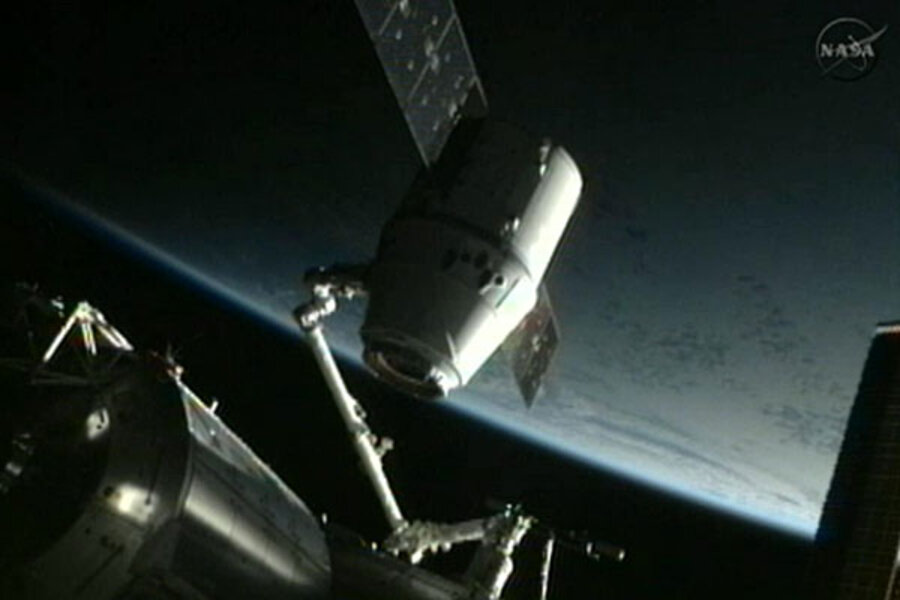SpaceX Dragon capsule homeward bound
Loading...
| Cape Canaveral, Fla.
The SpaceX Dragon capsule left the International Space Station early Thursday and aimed for a Pacific splashdown to end its historic flight.
Astronauts set the world's first commercial supply ship loose after a five-day visit, releasing the vessel with the space station's robot arm. The Dragon slowly backed away from the 250-mile-high outpost, on track for a midday return to Earth, six hours later.
The targeted splashdown zone is 560 miles southwest of Los Angeles.
IN PICTURES: The SpaceX Mission
"Great work, guys," NASA's Mission Control radioed to the six space station astronauts. A brown toy dragon decorated the flight director's desk in Houston. Within minutes, the capsule was outside the zone around the space station controlled by NASA and under the complete jurisdiction of SpaceX team in Hawthorne, Calif.
Last week, SpaceX became the first private company to send a cargo ship to the International Space Station. And on Thursday, it was on the verge of becoming the only supplier to return major items.
The unmanned Dragon capsule is returning nearly 1,400 pounds of old space station equipment and some science samples, a little more than it took up. Because it is a test flight, NASA did not want to load it with anything valuable.
The retro bell-shaped capsule was set to parachute down in the style of NASA's old Mercury, Gemini and Apollo spacecraft. A Dragon has returned from orbit once before, on a solo shakedown mission in December 2010.
Russia's Soyuz spacecraft for carrying crews also parachutes down, but on land, deep inside Kazakhstan. All of the government-provided cargo vessels of Russia, Europe and Japan, meanwhile, burn up on descent.
NASA lost the capability of getting things back when its space shuttles were retired last year. The space agency has turned to American private business to take over cargo runs and, eventually, astronaut ferry flights. Several companies are in the running for the human missions, with SpaceX in the lead given the success of this latest cargo shipment.
SpaceX's billionaire founder, Elon Musk of PayPal fame, expects to have astronauts riding his Dragons in three or four years.
Until then, the focus is on filling the space station's larder.
Assuming Thursday's entry goes well, the next Dragon supply mission will be in September. A SpaceX Falcon 9 rocket is already at Cape Canaveral, Fla., awaiting launch.
Rival Orbital Sciences Corp. hopes to have its first test flight off by year's end, launching from Wallops Island in Virginia.
President Barack Obama wants NASA free of orbital deliveries so it can work on getting astronauts to asteroids and Mars.
___IN PICTURES: The SpaceX Mission
Copyright 2012 The Associated Press.







